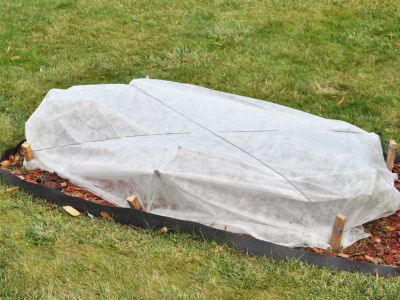What are Floating Row Covers for Gardens?
The use of garden row covers has increased in the last decade in the commercial and home garden. The best row covers for your garden depends on what you are using the row covers for. Some people use row covers exclusively for pest protection while others use them for frost protection or water irrigation. Floating row covers are made of very lightweight woven material that allows light and water to penetrate, but provides protection against sudden drops in temperature common in many growing regions.
How to Use Floating Row Covers
Giving cool season vegetables such as spinach, broccoli, cabbage, cauliflower, peas, lettuce, and radishes a head start on the season is easy when you use row covers for garden plants. Floating row covers grab the sun’s heat and cause the soil to warm up an extra one to three degrees. Installing row covers is extremely easy. Since the material is so light, it does not damage plants but floats on top of them. Lay the fabric over the plants and secure it with anchor pins or pieces of two-by-four lumber. Keeping the edges securely anchored is important, as it will deter flying pests and worms, as well as birds and squirrels.
Homemade Row Covers
Gardeners wishing to save a little extra on their garden budget might consider making their own floating row covers and making homemade row covers is easy to do. Measure the size of the bed you wish to cover. Fashion arched supports out of PVC piping that are wide enough and just tall enough to cover your garden plants. Use a small piece of rebar for support at each end of the PVC pipe hoops. Cover the hoops with the fabric of your choice. You can use sheer curtains, shade cloth, or purchase row cover material. Be sure to secure the sides using anchor pins or pieces of lumber.
